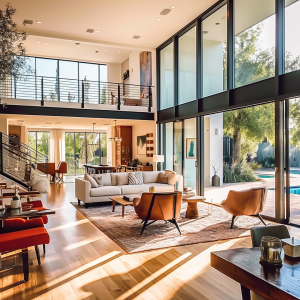
Interior fit-outs play a crucial role in converting raw spaces into habitable and visually appealing areas. Whether for residential, office, or commercial properties, fit-outs can transform an area to serve a specific purpose, making it both practical and visually appealing. This article will take you through the basics of interior fit-outs, their benefits, and the key factors to consider when starting a project.
Interior fit-outs are designed to create spaces that perfectly match the needs of their users. It typically includes installing elements such as floors, walls, ceilings, and lighting. Fit-outs can be classified into two main types.
A professional interior fit-out can significantly enhance a space’s usability and appeal. The following are some reasons why businesses and individuals invest in fit-outs:
Maximizing Space Efficiency: A well-executed fit-out optimizes space utilization. Smart space planning makes every inch functional, especially important in offices or commercial spaces where productivity is a priority.
Improving Visual Appeal: Fit-outs provide an opportunity to design a space that reflects personal taste or brand identity. Whether you’re going for a sleek, modern look or a more comfortable, homely feel, the right design can bring your vision to life.
Boosting Property Value: A well-executed fit-out can make a property more attractive to potential buyers or tenants. Functional and visually appealing spaces often draw more attention from potential buyers or tenants, making the property easier to market or lease.
Customization Opportunities: Fit-outs allow for extensive customization, tailoring the space to meet specific needs. Whether integrating the latest technology or choosing materials that align with your environmental goals, the space can be adapted to suit your preferences.
Before embarking on a fit-out, there are several key factors to keep in mind to ensure success:
Budgeting: A clear budget is crucial. The expenses for a fit-out can fluctuate based on factors like material choices, design intricacy, and the overall area to be fitted out.
Time Management: A well-managed timeline is important, particularly for commercial projects where delays can affect business operations. By setting clear deadlines and sticking to them, you can ensure that the project is completed on time without compromising on quality.
Compliance with Regulations: It’s important to make sure your fit-out complies with local building codes and safety regulations. Working with experienced professionals who understand these requirements will help avoid potential legal issues and ensure the safety of the space.
Balancing Functionality and Aesthetics: While it’s essential for a space to be visually appealing, it should also be highly functional. The design should support the intended use of the space, whether that’s improving workflow in an office or enhancing the customer experience in a retail setting.
Customization Opportunities: Fit-outs allow for extensive customization, tailoring the space to meet specific needs. Whether integrating the latest technology or choosing materials that align with your environmental goals, the space can be adapted to suit your preferences.
Interior fit-outs are constantly evolving, with new design trends emerging that cater to both functionality and aesthetics.The fit-out industry is evolving in response to the following current trends:
Interior fit-outs are essential for transforming empty spaces into functional and personalized environments. Whether for a residential home, an office, or a retail store, a well-planned fit-out can enhance both the functionality and aesthetic appeal of a space.
By carefully considering factors such as budget, functionality, and current design trends, you can ensure a successful fit-out that adds value to your property while also creating a space that feels comfortable and personalized. With the right team of professionals, any space can be transformed into a place that truly works for you.